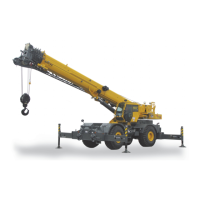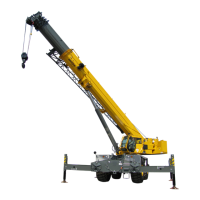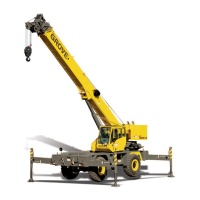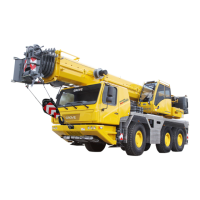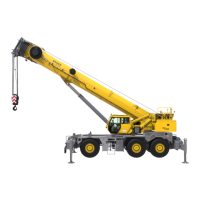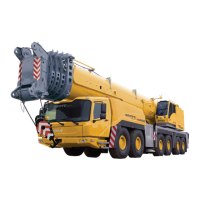Grove Published 4-09-2021, Control # 364-11 3-13
RT765E-2 OPERATOR MANUAL OPERATING CONTROLS AND PROCEDURES
main hoist functions and de-energizes the Main Hoist High
Speed Solenoid, resulting in low line speeds.
Telescope or Auxiliary Hoist Control (Single
Axis Option)
The Telescope or Auxiliary Hoist (TELE or AUX) Control (4)
(Figure 3-8) is located on the left armrest. The joystick
controls the telescope functions when the crane is not
equipped with an auxiliary hoist. Push the joystick forward to
telescope the boom out, or pull the joystick back to telescope
boom in.
When equipped with an auxiliary hoist, the joystick controls
auxiliary hoist functions and telescope functions are
controlled through a foot pedal. Push the joystick forward to
let out the hoist cable or pull the lever back to reel the cable
in.
Swing Control (Single Axis Option)
The Swing Control joystick (5) (Figure 3-6) located on the
right armrest, controls the swing function. The joystick, when
positioned forward (rotates the turntable clockwise) or back
(rotates the turntable counterclockwise), actuates a control
valve through hydraulic pilot pressure to provide 360 degree
continuous rotation in the desired direction.
Swing and Telescope or Swing and Auxiliary
Hoist Control Lever (Dual Axis Option—Not
Shown)
The Swing and Telescope or Auxiliary Hoist (SWING/TELE
or SWING/AUX) control lever is located on the end of the left
armrest. The lever controls the swing and telescope
functions when the crane is not equipped with an auxiliary
hoist. When equipped with an auxiliary hoist, the lever
controls swing and auxiliary hoist functions and telescope
functions are controlled through a foot pedal.
If not equipped with an auxiliary hoist, positioning the lever to
the left or right actuates a control valve through hydraulic
pilot pressure to provide 360 degree continuous rotation in
the desired direction. Positioning the lever forward actuates
the control valve to telescope the boom out and pulling the
lever back actuates the boom to telescope in.
If equipped with an auxiliary hoist, positioning the lever
forward actuates the control valve to let out hoist cable and
pulling the lever back reels the cable in. Moving the lever in a
diagonal direction actuates the two functions simultaneously.
Auxiliary Hoist Speed Selector Switch
(Optional)
The Auxiliary Hoist Speed Selector Switch (6) (Figure 3-8) is
a three positioned maintained switch (High/Off/Low) that is
located on the left armrest. Positioning the switch to high
position allows auxiliary hoist functions and energizes the
Auxiliary Hoist High Speed Solenoid, resulting in high line
speeds. Positioning the switch to the center off position will
prevent hoisting. Positioning the switch to the low position
allows auxiliary hoist functions and de-energizes the
Auxiliary Hoist High Speed Solenoid, resulting in low line
speeds.
Rear Steer Switch
The Rear Steer Control Switch (7) (Figure 3-8) is a three-
position, spring centered to off, rocker switch, located on the
left armrest. Press the bottom of the switch to actuate a
control valve to turn the rear wheels to the left, causing the
crane to turn to the right. Press the top of the switch actuates
a control valve to turn the rear wheels to the right, causing
the crane to turn to the left. When the wheels are not
centered the Rear Wheels Not Centered light on the steering
column illuminates. Releasing the switch causes it to return
to the center off position.
To straighten the rear wheels press the switch until the Rear
Wheels Not Centered indicator light goes off.
Swing Brake Control Switch
The Swing Brake Control Switch (8) (Figure 3-8) is located
on the left arm rest. This two-position rocker switch (ON/
OFF) is used to control a hydraulic valve that directs a
regulated flow of pressure to and from the swing brake.
Positioning the switch to ON will apply the swing brake and
positioning the switch to OFF will release the swing brake.
When the switch is in the ON position, the red indicator light
on the steering column is illuminated. The switch has a lock
to prevent accidental activation.
DANGER
Crushing Hazard!
Death or serious injury could result from being crushed by
moving machinery.
Before actuating swing or any other function, sound horn
and verify that all personnel are clear of rotating and
moving parts.
DANGER
Crushing Hazard!
Death or serious injury could result from being crushed by
moving machinery.
Before actuating swing or any other function, sound horn
and verify that all personnel are clear of rotating and
moving parts.

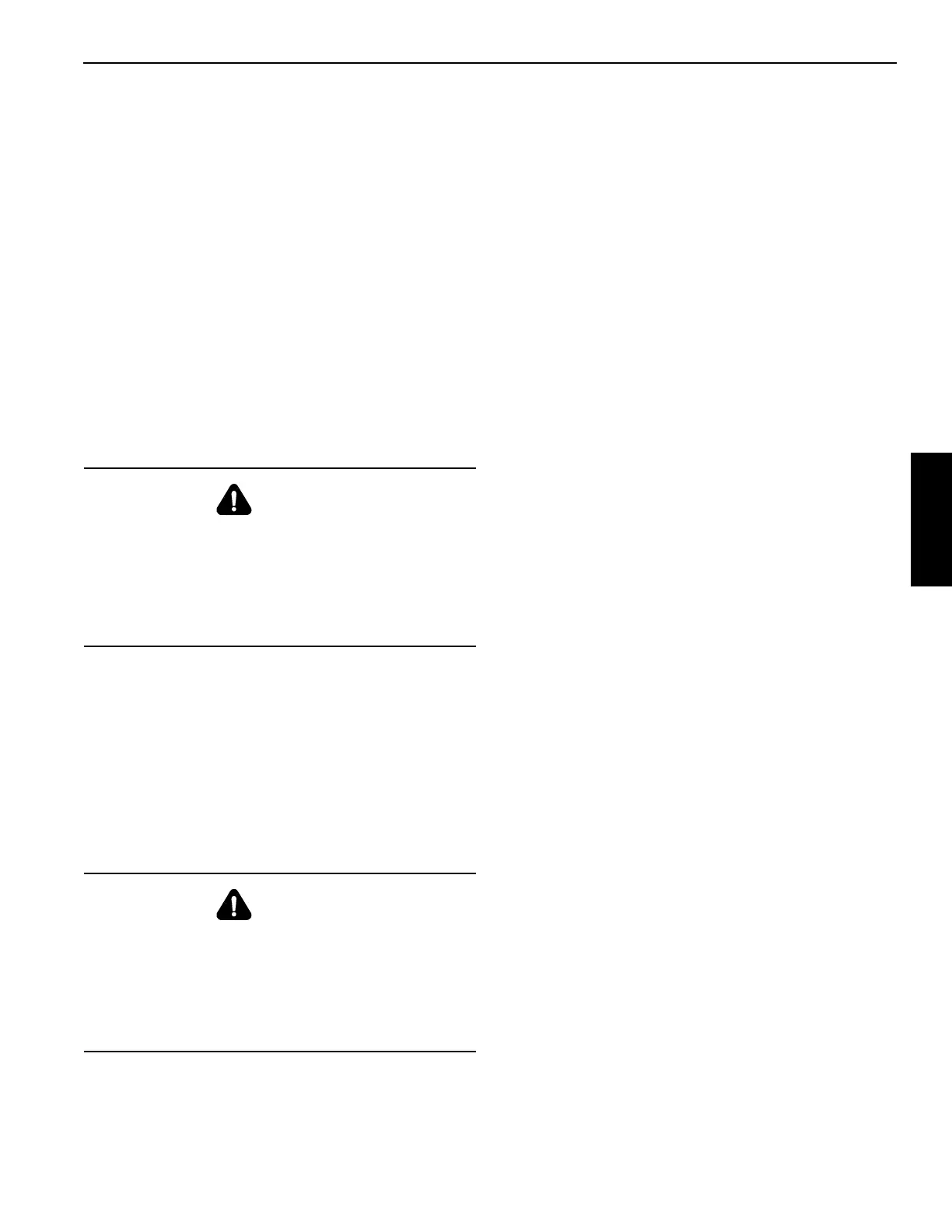